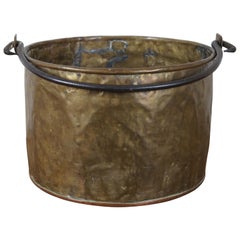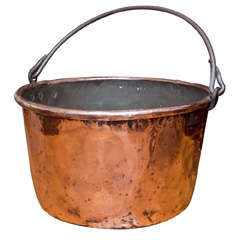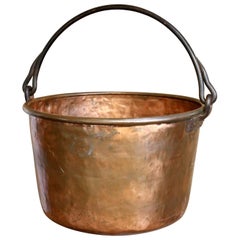Antique Apple Butter Kettle
Late 19th Century Antique Apple Butter Kettle
Brass, Copper, Iron
Recent Sales
19th Century American Antique Apple Butter Kettle
Copper, Wrought Iron
1890s American Folk Art Antique Apple Butter Kettle
Copper
19th Century Victorian Antique Apple Butter Kettle
Copper
19th Century Rustic Antique Apple Butter Kettle
Copper, Iron
19th Century Rustic Antique Apple Butter Kettle
Brass, Copper
Late 19th Century American American Colonial Antique Apple Butter Kettle
Copper
18th Century Rustic Antique Apple Butter Kettle
Copper
19th Century Antique Apple Butter Kettle
Copper, Wrought Iron
19th Century American Antique Apple Butter Kettle
Copper, Iron
Late 19th Century American Antique Apple Butter Kettle
Copper, Iron
People Also Browsed
19th Century French Napoleon III Antique Apple Butter Kettle
Bronze
2010s American Modern Antique Apple Butter Kettle
Brass
19th Century French Beaux Arts Antique Apple Butter Kettle
Iron
19th Century French French Provincial Antique Apple Butter Kettle
Wood
Late 17th Century English William and Mary Antique Apple Butter Kettle
Walnut, Burl
Mid-20th Century American Antique Apple Butter Kettle
Pine
Late 19th Century Chinese Qing Antique Apple Butter Kettle
Brass
1960s Italian Scandinavian Modern Antique Apple Butter Kettle
Ceramic
Late 19th Century Unknown Regency Antique Apple Butter Kettle
Metal
20th Century Antique Apple Butter Kettle
Porcelain
1950s American Regency Antique Apple Butter Kettle
Brass
Late 19th Century French Belle Époque Antique Apple Butter Kettle
Crystal, Bronze
1960s Italian Brutalist Antique Apple Butter Kettle
Iron
Early 18th Century Dutch Chinoiserie Antique Apple Butter Kettle
Tin
Late 19th Century Unknown Victorian Antique Apple Butter Kettle
Mahogany
Mid-20th Century American Mid-Century Modern Antique Apple Butter Kettle
Cotton, Linen
Materials: Copper Furniture
From cupolas to cookware and fine art to filaments, copper metal has been used in so many ways since prehistoric times. Today, antique, new and vintage copper coffee tables, mirrors, lamps and other furniture and decor can bring a warm metallic flourish to interiors of any kind.
In years spanning 8,700 BC (the time of the first-known copper pendant) until roughly 3,700 BC, it may have been the only metal people knew how to manipulate.
Valuable deposits of copper were first extracted on the Mediterranean island of Cyprus around 4,000 BC — well before Europe’s actual Bronze Age (copper + tin = bronze). Tiny Cyprus is even credited with supplying all of Egypt and the Near East with copper for the production of sophisticated currency, weaponry, jewelry and decorative items.
In the 15th, 16th and 17th centuries, master painters such as Leonardo da Vinci, El Greco, Rembrandt and Jan Brueghel created fine works on copper. (Back then, copper-based pigments, too, were all the rage.) By the late 19th and early 20th centuries, decorative items like bas-relief plaques, trays and jewelry produced during the Art Deco, Arts and Crafts and Art Nouveau periods espoused copper. These became highly valuable and collectible pieces and remain so today.
Copper’s beauty, malleability, conductivity and versatility make it perhaps the most coveted nonprecious metal in existence. In interiors, polished copper begets an understated luxuriousness, and its reflectivity casts bright, golden and earthy warmth seldom realized in brass or bronze. (Just ask Tom Dixon.)
Outdoors, its most celebrated attribute — the verdigris patina it slowly develops from exposure to oxygen and other elements — isn’t the only hue it takes. Architects often refer to shades of copper as russet, ebony, plum and even chocolate brown. And Frank Lloyd Wright, Renzo Piano and Michael Graves have each used copper in their building projects.
Find antique, new and vintage copper furniture and decorative objects on 1stDibs.


